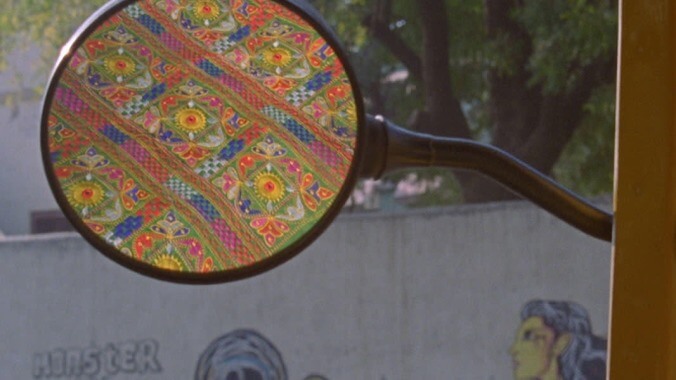The Grand Bizarre is a dazzling stop-motion marvel

Critics like to throw around the phrase “pure cinema,” which is generally used to suggest that the medium’s formal elements—composition, camera movement, editing, sound design—take precedence over narrative and performance. For true purity, however, there’s nothing like the total abstraction of many experimental works. These tend to be short films, and hence rarely receive any sort of traditional distribution; indeed, it was only in the past couple of decades that longtime avant-garde titans like Stan Brakhage and Hollis Frampton finally permitted their work to be issued on home video. Once in a blue moon, though, we’re treated to a magnificent feature-length dazzler like Jodie Mack’s The Grand Bizarre: a colorfully kinetic hour of stop-motion playfulness, painstakingly shot by Mack herself in far-flung locations around the world. There are no people (apart from random passers-by, glimpsed for a single frame), nor does any story emerge (unless “life is labor” counts). It’s just a constant riotous whirlwind of eye candy.
Textiles are the focus here: rugs, scarves, dresses, random swatches of fabric. Some of them are one solid color; most are intricately patterned. At times, they fill the entire frame, as Mack creates a dizzying kaleidoscopic effect by cutting to a new image multiple times each second. Often, though, the fabrics occupy one specific area, contextualized by the world beyond. (The film was reportedly shot on every continent except Antarctica.) They spill into and out of suitcases, snake along the baggage conveyor belts at airports, are reflected in various automobiles’ rear-view and side-view mirrors. Mack expertly varies the rhythm and tempo in a way that prevents visual fatigue, even though there’s virtually always something in rapid, disorienting flux. All the while, we hear a soundtrack that alternates between beat-heavy electronica—including one delightful tune constructed around Skype’s familiar ringtone—and industrial noises that presumably signify the work that went into making all of these beautiful objects.
Okay, maybe “true purity” went too far. While The Grand Bizarre can be enjoyed strictly for its aesthetic marvels, Mack is no stranger to conceptual ambition. Her best-known (but essentially unreleasable) previous work, 2013’s “Dusty Stacks Of Mom: The Poster Project,” is a 40-minute quasi-musical that accompanies shots of movie posters and celebrity stills with a full-length cover version of Pink Floyd’s The Dark Side Of The Moon, its lyrics rewritten to lament the failure of her parents’ business selling those materials out of a warehouse. The Grand Bizarre doesn’t swing quite that hard at potential cult status, but the film does feature a subtly pointed message about the human cost of labor, encoded within the locations (we see a lot of factories and shipping containers) and the audio. Its extended final movement cycles full-speed through literally hundreds of distinct textile images, while we hear nothing but soft rustles and a recurring double click. The sounds are never explained, but eventually you realize what they represent, and register the mind-boggling number of rustles and clicks that were necessary to create just the montage that’s currently assaulting your eyeballs. There’s always an element of awe when it comes to stop-motion animation, but usually one imagines a large team at work. This is just one remarkable woman.